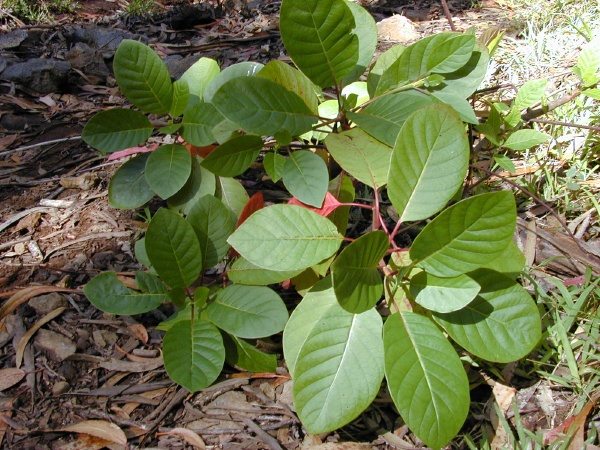Interactions
In order to acquire nutrients, Cinchona pubescens
forms a relationship with arbuscular mycorrhizae.
The association formed is also called an
endomycorrhizae. This is a mutualistic relationship
which allows nutrient
 exchange
between a fungus and the roots of the tree. In the
arbuscular mycorrhizae, there is no dense coating
over the surface of the root, and so the fungal
hyphae are able to submerge into the root of the
tree. The fungal hyphae enter the epidermal cells
and penetrate through to the root cortex. The
fungal hyphae do not extend itself any further into
the root to break the plasma membrane. Next, the
fungal hyphae form many invaginations around the
surface of the root cell’s
exchange
between a fungus and the roots of the tree. In the
arbuscular mycorrhizae, there is no dense coating
over the surface of the root, and so the fungal
hyphae are able to submerge into the root of the
tree. The fungal hyphae enter the epidermal cells
and penetrate through to the root cortex. The
fungal hyphae do not extend itself any further into
the root to break the plasma membrane. Next, the
fungal hyphae form many invaginations around the
surface of the root cell’s
 membrane. After forming
the invaginations and branching, the hyphae form the
structures where this relationship receives its name
from. The little structures are called arbuscules
or more informally known as “little trees” for their
shape. The arbuscules are very important because
they are the site of nutrient transfer.
membrane. After forming
the invaginations and branching, the hyphae form the
structures where this relationship receives its name
from. The little structures are called arbuscules
or more informally known as “little trees” for their
shape. The arbuscules are very important because
they are the site of nutrient transfer.
Want to know more about the life cyle of the fever tree? Visit Reproduction next.
Want to go Home instead?